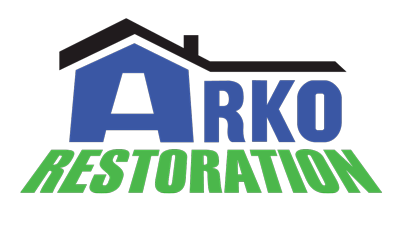Fire damage can be devastating, leaving homeowners feeling overwhelmed and uncertain about what steps to take next. However, understanding the process of fire damage restoration can provide clarity and help ease some of the stress during such a challenging time. In this guide, we’ll outline the step-by-step process of fire damage restoration to help you navigate through the recovery journey effectively.
1. Assessment and Inspection:
- The first step in fire damage restoration is assessing the extent of the damage.
- A professional restoration team will conduct a thorough inspection of the property to determine the severity of the fire damage.
- This assessment helps in creating a comprehensive restoration plan tailored to your specific needs.
2. Securing the Property:
- Safety is paramount after a fire incident.
- Restoration professionals will secure the property to prevent further damage and ensure the safety of occupants and restoration crews.
- This may involve boarding up windows, covering damaged roofs, and securing entry points to deter unauthorized access.
3. Water Removal and Drying:
- Water damage often accompanies fire damage due to firefighting efforts.
- Restoration experts will remove excess water using specialized equipment such as pumps and dehumidifiers.
- Drying the affected areas thoroughly is crucial to prevent mold growth and further structural damage.
4. Smoke and Soot Removal:
- Smoke and soot residues can permeate various surfaces throughout the property, causing lingering odors and potential health hazards.
- Professional restoration teams utilize specialized techniques and equipment to remove smoke residues and eliminate odors effectively.
- This may include thermal fogging, ozone treatments, and deep cleaning of affected surfaces.
5. Cleaning and Sanitization:
- Every surface affected by fire and smoke damage requires thorough cleaning and sanitization to restore it to its pre-loss condition.
- Fire damage restoration professionals use industrial-grade cleaners and disinfectants to remove contaminants and ensure a safe living environment for occupants.
6. Restoration and Reconstruction:
- Once the property has been cleaned and sanitized, the restoration process begins.
- This may involve repairing or replacing damaged structural elements, such as walls, floors, and ceilings.
- Restoration professionals work diligently to restore the property to its pre-fire condition, making necessary repairs and renovations along the way.
7. Final Inspection and Quality Assurance:
- Before completing the restoration process, a final inspection is conducted to ensure that all work meets industry standards and exceeds client expectations.
- This step ensures that the property is safe, structurally sound, and free from any lingering signs of fire damage.
8. Returning to Normalcy:
- The final step in the fire damage restoration process is returning the property to its pre-loss state.
- While the physical restoration is complete, the emotional toll of a fire incident may linger.
- Restoration professionals provide support and guidance to homeowners throughout the process, helping them rebuild and restore their lives after a traumatic event.
9. Documenting Damage:
- Throughout the restoration process, it’s essential to document the extent of the damage thoroughly.
- Photographs, videos, and written descriptions can serve as valuable evidence for insurance claims and future reference.
10. Coordination with Insurance Providers:
- Fire damage restoration professionals often work closely with insurance companies to streamline the claims process and ensure that homeowners receive fair compensation for the damages incurred.
- They can provide detailed documentation and estimates to support insurance claims and facilitate timely reimbursement.
11. Addressing Health and Safety Concerns:
- Fire damage restoration involves addressing potential health and safety hazards resulting from the fire incident.
- Restoration professionals prioritize safety protocols to protect both occupants and restoration crews from exposure to harmful substances and contaminants.
12. Air Quality Testing and Treatment:
- Smoke and soot particles can compromise indoor air quality, posing respiratory risks to occupants.
- Restoration teams may conduct air quality testing to assess the level of contamination and implement appropriate treatment measures, such as air filtration and purification systems.
13. Content Restoration and Salvage:
- Personal belongings and contents affected by fire and smoke damage can hold significant sentimental and monetary value.
- Restoration experts employ specialized techniques, such as content cleaning, pack-out services, and restoration technologies, to salvage and restore damaged items whenever possible.
14. Ongoing Communication and Updates:
- Effective communication between homeowners and restoration professionals is essential throughout the restoration process.
- Regular updates and transparent communication help homeowners stay informed about the progress of restoration efforts and address any concerns or questions they may have along the way.
15. Educational Resources and Support:
- Many restoration companies offer educational resources and support services to help homeowners navigate the challenges of fire damage recovery.
- This may include workshops, informational materials, and access to support networks to assist homeowners in rebuilding their lives after a fire incident.
Conclusion
Fire damage restoration is a complex process that requires careful assessment, thorough cleaning, and reconstruction. From securing the property to coordinating with insurance providers and addressing health concerns, each step is vital for a successful restoration journey. Effective communication, support services, and prioritizing safety are essential elements throughout the process. By understanding and following this step-by-step guide, homeowners can navigate the restoration process with confidence, eventually returning to a sense of normalcy in their homes.


